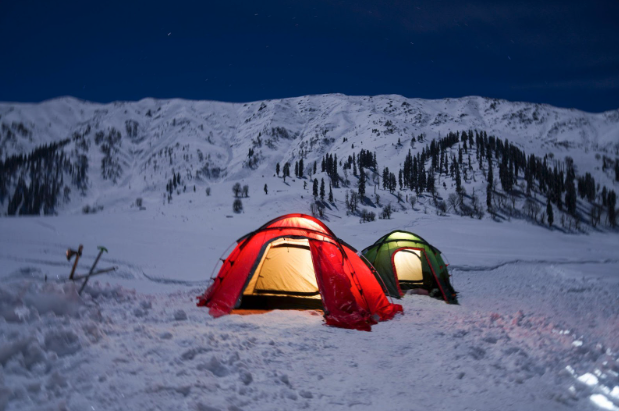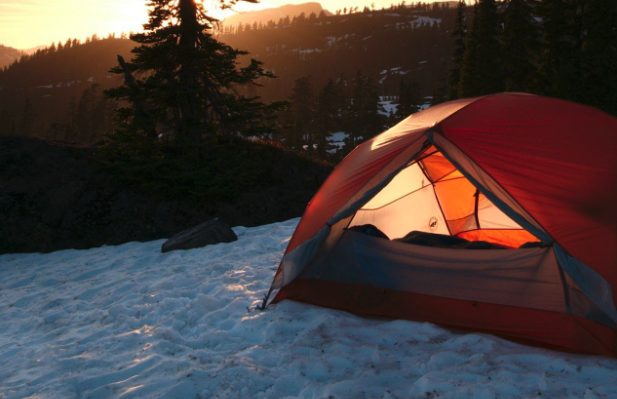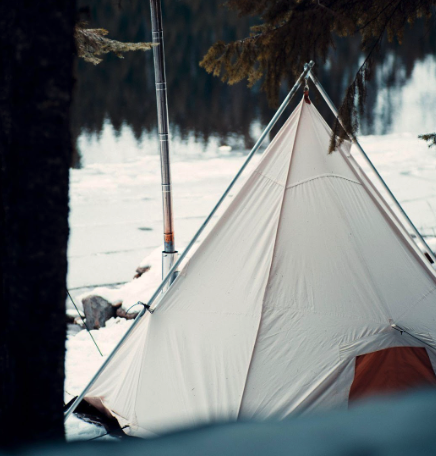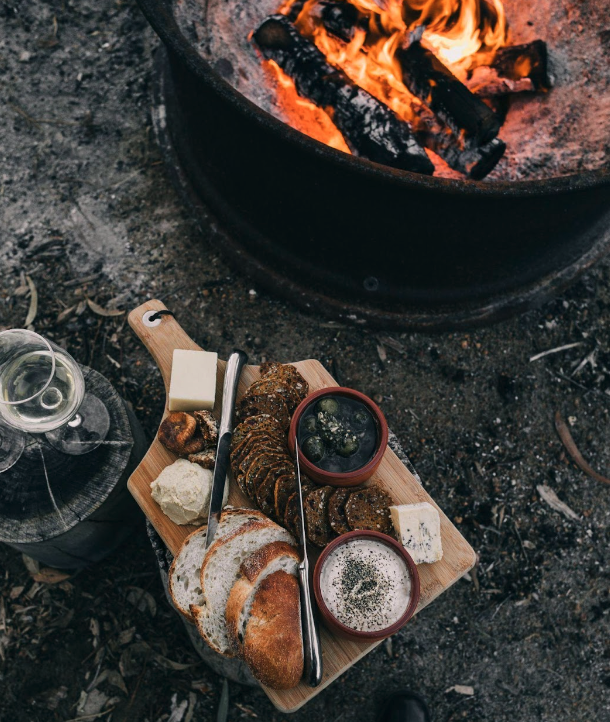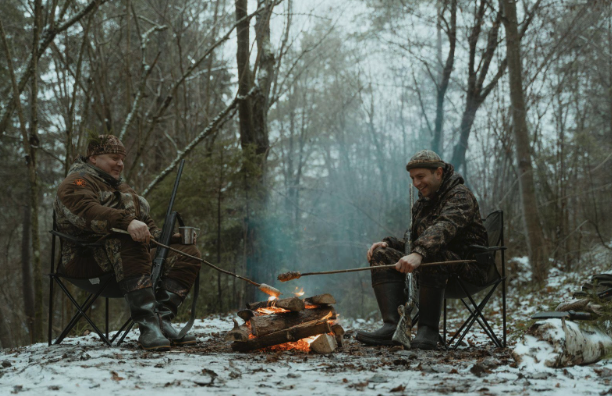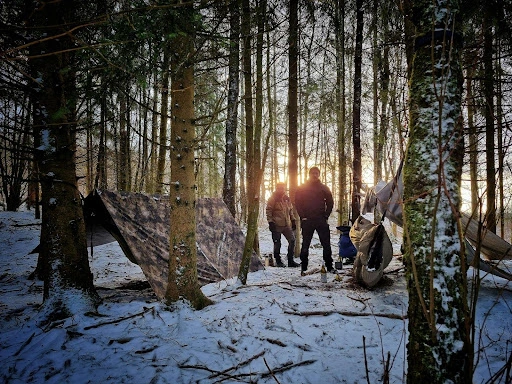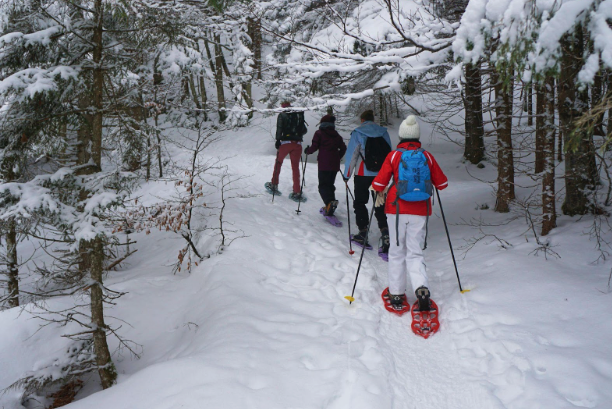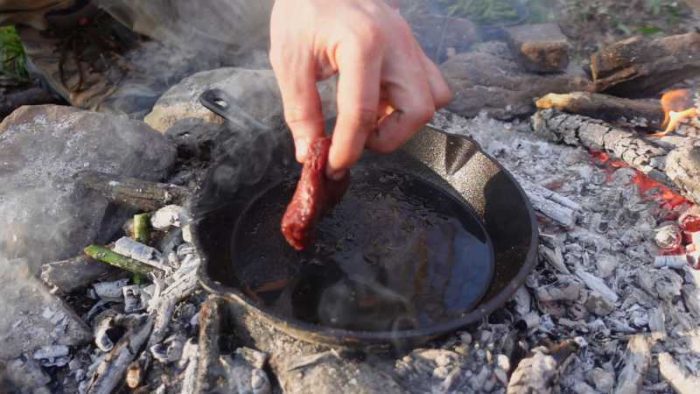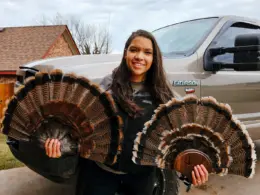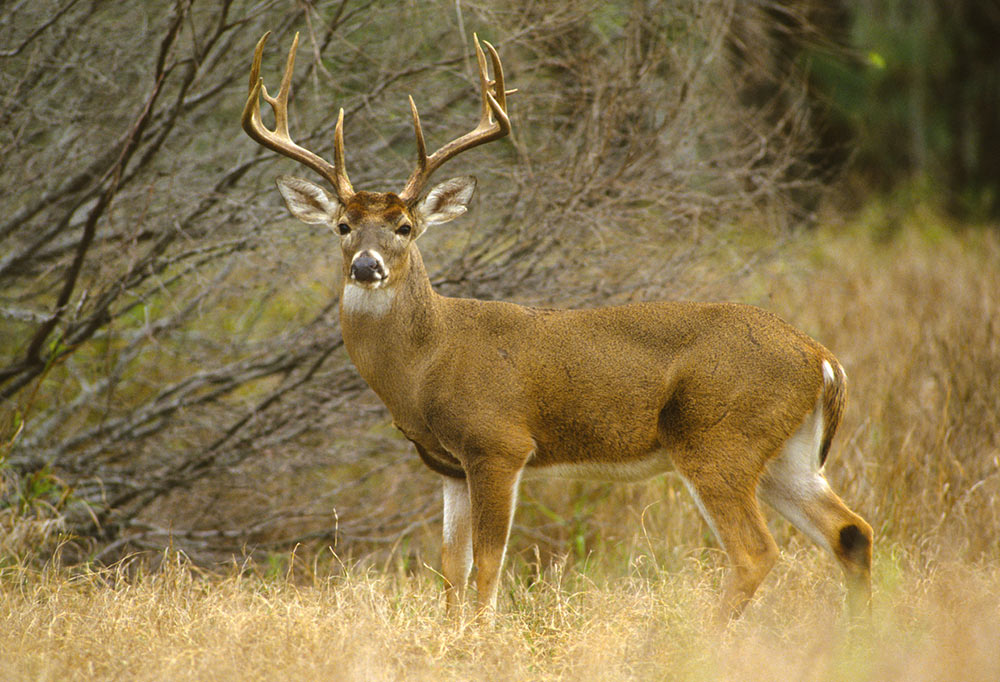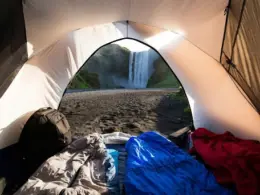Winter camping is a unique and enchanting experience, bearing a beauty that often leaves campers mesmerized. The pristine snow-covered landscapes, serene silence, and the alluring charm of winter’s chill offer a radically different camping experience that is worth every shiver.
This beginner-friendly guide aims to navigate beginners through the icy maze of winter camping, equipping you with handy tips and tricks to embrace the cold confidently.
Table of Contents
Understanding What Winter Camping Is
Winter camping is more than just a colder version of your summer escapades—it’s an entirely different beast, in a good way of course!
Unlike camping in the warmer months, winter camping challenges your mental fortitude and physical resilience, offering a unique blend of serenity and thrill. The mental game involves maintaining a positive outlook despite the cold, and the physical aspect involves dealing with colder temperatures, managing layers, and setting up camp in the wet snow.
So, why do most people shy away from winter camping? Well, the lower temperatures and potential snowfall can sound intimidating. Plus, the thought of sleeping outdoors when it’s freezing might not seem particularly appealing. However, with proper preparation and the right gear, winter camping can be just as comfortable, if not more, than camping in milder conditions.
Before talking about the preparations for winter camping, here are some clear reasons why you should go winter camping and what challenges you will expect:
Benefits:
- Enjoy a serene and less crowded environment. Plus, no bugs.
- Experience the unique beauty of winter landscapes, plus no bugs.
- Hone your survival skills. (Did I mention no bugs?)
Challenges:
- Dealing with freezing temperatures.
- Required specialized winter gear.
- Managing physical exertion in cold climates (not sweating).
Believe it or not, dealing with these challenges is not difficult. In most situations, it will be your brain that will try and play tricks on you, but like the rest of it, you can prepare for that.
Preparing for Your First Winter Camping Experience
If you’re venturing into the winter wilderness for the first time, it’s critical to get a feel for the frigid temperatures in a safer environment, like your backyard. This can give you a real sense of what to expect without the risk of being stranded in the wilderness.
Start by testing your gear. Assemble your tent, try out your sleeping bag, and make sure your headlamp batteries are fresh. Remember, it’s better to discover any issues while you’re still at home rather than in the middle of a snow-covered forest.
Replicate the camping conditions as closely as possible. Simulate a cold night and sleep in your gear. This gives you the chance to make adjustments and address any comfort issues.
Now, let’s talk about some fire mastery skills. A roaring campfire can be a lifesaver during winter camping, but it’s not always easy to light one in snowy conditions. Practice building and maintaining a fire in your backyard first. This will also help you understand how much firewood you might need on your trip.
As for the basics of winter camping, there are some key points to keep in mind.
- Dress in layers:
- The base layer should be moisture-wicking
- The middle layer should be insulating
- The outer layer should be waterproof
- Monitor body temperature and adjust clothing accordingly
- Hydrate regularly with water (no, fresh snow is not a substitute)
- Plan meals with high-calorie foods to fuel your body in the cold
- Share camping plans with someone who’s not going, for safety precautions
Winter camping admittedly does require more work and planning to be a fun experience. But once you’ve done a few trips you’ll realize that it’s not all that difficult. The sense of achievement after spending the night outside in negative temperatures is also quite a rewarding feeling.
Essential Gear for Winter Camping
When winter camping, your gear list expands to include some additional items to accommodate the colder temperatures and snowy conditions. This list does not seek to be exhaustive, but it will get you started on the right track.
Tents: A four-season tent, designed to withstand harsh weather conditions like heavy snowfall or strong winds, is a must-have for winter camping. Look for one with aluminum poles and durable fabric like canvas.
Sleeping bags: Opt for a sleeping bag rated for temperatures lower than you expect to encounter. The rated temperature is meant for survival and not comfort. You should also invest in a sleeping pad with a high R-value for insulation from the cold ground. The closed-cell foam also works well as a sleeping pad.
Clothing: Don’t forget the three-layer rule we mentioned before. Also, pack a pair of insulated boots, thick socks, gloves, and a beanie to keep your extremities warm. Another smart move would be to bring multiple of your clothing to change into if something gets wet.
Cooking gear: A reliable camping stove is crucial as many foods and liquids will freeze at camp temperatures. Also, take a liquid fuel stove that functions well in cold temperatures. Propane and wood are your best bet in sub-zero temperatures.
Emergency gear: Pack a first-aid kit, a multi-tool, and a headlamp with extra batteries. Also, keep a whistle and a bright-colored tarp for signaling in case of emergencies. Chemical hand warmers can take the edge off the chill if needed. Don’t forget the shovel to dig out your campsite so that you can place your tent.
When choosing your gear, prioritize quality and durability over cost. These items are an investment in your safety and comfort. Remember to take proper care of your gear.
Clean and dry items like your tent and sleeping bag before storing them. Always check your gear before heading out, and replace items that are worn out or damaged. It may seem tedious, but it’s these precautions that ensure your winter camping adventure is memorable for all the right reasons.
What Food to Bring
When it comes to winter camping, the right food can make a world of difference. Pack high-calorie and nutrient-dense foods to fuel your body for the cold. Ideal food choices include nuts, dried fruits, cheese wedges, and energy bars. A high-quality cheese wedge can provide up to a thousand calories of energy.
Uncooked pasta, instant rice, and freeze-dried meals are also excellent options as they’re lightweight and easy to cook. And who can forget everyone’s favorite, the classic camping food – s’mores?
Consider bringing along a few luxuries such as hot cocoa or marshmallows. They might add a bit of weight, but they’ll warm your spirits on a cold winter night. Remember, the key is to choose foods that offer a lot of energy per ounce.
One benefit of winter camping is that Mother Nature provides a built-in refrigerator. This means you can take perishables like eggs, butter, and even steak without worrying about them spoiling.
As for storing your food, even in winter, critters can be a problem. Always store your food in a bear canister or hang it in a tree at least 10 feet off the ground and 4 feet away from the trunk. This will keep it safe from curious animals and ensure you have plenty of energy for your winter camping adventure.
Choosing Your First Winter Camping Site
When selecting your first winter camping site, safety should be your top priority. Pay attention to avalanche warnings and avoid camping near bodies of water that may not be frozen solid.
Accessibility is another key factor; it’s advisable to choose a site that’s relatively close to civilization for your first few trips. You should also consider the terrain; avoid steep slopes and look for a flat area that’s sheltered from the wind to set up camp.
One thing everyone should do before going out is to check the weather forecast before you go. Unexpected storms can quickly turn a fun adventure into a dangerous situation.
Winter Camping Hacks and Tips
Embarking on a winter camping trip can be a thrilling adventure, but it’s essential to know a few hacks to make your experience more enjoyable.
- To stay cozy while sleeping, fill a water bottle with hot water and put it in your sleeping bag before turning in for the night. You can also heat rocks in a fire, wrap them in a towel, and throw them into your bag
- Food preparation in the winter can be challenging. The secret lies in planning your meals and doing as much prep work as possible at home. Think about meals that can be cooked in one pot or can be eaten hot or cold.
- When it comes to the washroom, portable camping toilets can be a great option. Keep it in a small, separate tent or an established outhouse if available. If you must dig a hole, make sure it’s at least 200 feet from any water source. And remember, pack out your toilet paper!
Safety Tips for Winter Camping
Safety is crucial when winter camping. It’s wise to always inform someone of your camping plans and expected return date. Carry a map and compass as a backup to your GPS, as batteries can run out quickly in cold temperatures.
Know the signs of frostbite and hypothermia and be ready to respond accordingly. Frostbite generally appears on the extremities such as fingers, toes, and nose. If you have frostbite it is best to get to a hospital as quickly as you can.
One last thing is to avoid venturing onto frozen lakes or ponds unless you’re sure they’re solidly frozen. Falling into frigid waters can be incapacitating and it’s best to steer clear if you’re not experienced.
Conclusion
The essential elements for a successful winter camping trip include planning your meals, picking the right site, staying warm and cozy with layers, and always being aware. Always inform someone about your plans, carry a map, and compass, and remember to layer your clothing appropriately. Don’t let the cold deter you; there’s an unrivaled beauty to a landscape blanketed in snow and the crisp, clean air of a winter’s morning that makes winter camping well worth it

